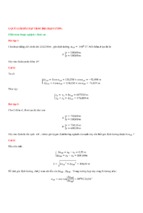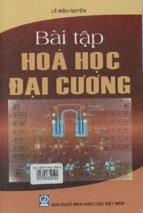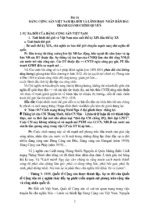Downloaded from ascelibrary.org by RMIT UNIVERSITY LIBRARY on 01/03/19. Copyright ASCE. For personal use only; all rights reserved.
International Conference on
Sustainable Infrastructure
2017
POLICY, FINANCE, AND EDUCATION
Proceedings of the International Conference
on Sustainable Infrastructure 2017
> New York, New York
> October 26–28, 2017
EDITED BY
Lucio Soibelman, Ph.D.
Feniosky Peña-Mora, Sc.D.
Downloaded from ascelibrary.org by RMIT UNIVERSITY LIBRARY on 01/03/19. Copyright ASCE. For personal use only; all rights reserved.
INTERNATIONAL CONFERENCE ON
SUSTAINABLE INFRASTRUCTURE
2017
POLICY, FINANCE, AND EDUCATION
PROCEEDINGS OF THE INTERNATIONAL CONFERENCE ON
SUSTAINABLE INFRASTRUCTURE 2017
October 26–28, 2017
New York, New York
SPONSORED BY
Committee on Sustainability of the American Society of Civil Engineers
EDITED BY
Lucio Soibelman, Ph.D.
Feniosky Peña-Mora, Sc.D
RESTON, VIRGINIA
Downloaded from ascelibrary.org by RMIT UNIVERSITY LIBRARY on 01/03/19. Copyright ASCE. For personal use only; all rights reserved.
Published by American Society of Civil Engineers
1801 Alexander Bell Drive
Reston, Virginia, 20191-4382
www.asce.org/publications | ascelibrary.org
Any statements expressed in these materials are those of the individual authors and do not
necessarily represent the views of ASCE, which takes no responsibility for any statement
made herein. No reference made in this publication to any specific method, product, process,
or service constitutes or implies an endorsement, recommendation, or warranty thereof by
ASCE. The materials are for general information only and do not represent a standard of
ASCE, nor are they intended as a reference in purchase specifications, contracts, regulations,
statutes, or any other legal document. ASCE makes no representation or warranty of any
kind, whether express or implied, concerning the accuracy, completeness, suitability, or
utility of any information, apparatus, product, or process discussed in this publication, and
assumes no liability therefor. The information contained in these materials should not be used
without first securing competent advice with respect to its suitability for any general or
specific application. Anyone utilizing such information assumes all liability arising from such
use, including but not limited to infringement of any patent or patents.
ASCE and American Society of Civil Engineers—Registered in U.S. Patent and Trademark
Office.
Photocopies and permissions. Permission to photocopy or reproduce material from ASCE
publications can be requested by sending an e-mail to
[email protected] or by locating a
title in ASCE's Civil Engineering Database (http://cedb.asce.org) or ASCE Library
(http://ascelibrary.org) and using the “Permissions” link.
Errata: Errata, if any, can be found at https://doi.org/10.1061/9780784481202
Copyright © 2017 by the American Society of Civil Engineers.
All Rights Reserved.
ISBN 978-0-7844-8120-2 (PDF)
Manufactured in the United States of America.
International Conference on Sustainable Infrastructure 2017
Preface
THE CHALLENGE
Downloaded from ascelibrary.org by RMIT UNIVERSITY LIBRARY on 01/03/19. Copyright ASCE. For personal use only; all rights reserved.
The 2017 International Conference on Sustainable Infrastructure focused on developing
roadmaps to address the UN Sustainability Goals of developing Sustainable cities and
building resilient infrastructure as well as the NAE Grand Challenge to "restore and
improve urban infrastructure," all while supporting the ASCE Grand Challenge of "how
we can work together towards the shared goal of reducing life cycle costs by 50% by
2025 and foster the optimization of infrastructure for society."
THE ASCE
The American Society of Civil Engineers (ASCE) is respected worldwide for bringing to
the forefront new ideas and critical concepts and technical knowledge on subjects of
importance to the civil engineering professions and the public and private clients that
civil engineers serve. Specialty conferences of the ASCE, such as ICSI2017, bring
together, educate and inform the diverse civil engineering community, including
practitioners, public and private infrastructure owners, policy makers, researchers,
graduates and engineering students. The workshops, keynote lectures, panel discussions
and tours broadened our understanding of research underway and best practices in the
field.
THE CONFERENCE
The International Conference on Sustainable Infrastructure for an Uncertain World
addressed what we know about an uncertain future, and probed the edges of what we do
not know. Uncertainty prods engineers to go deeper, seek higher, and initiate research
collaborations to assure that the best efforts can be brought together to combat the impact
of climate change and energy unpredictability.
THE GOALS
These proceedings fulfill a primary purpose of the ICSI2017 conference: to assemble,
deliver and disseminate a cogent and comprehensive assessment of he current state of
sustainable infrastructure in an uncertain world. Local and global decision-making on
energy policy, infrastructure maintenance, enhancement and replacement and investments
in hydrology and transit were discussed and debated by experts from around the world.
Those working to maintain and improve infrastructure performance in a rapidly changing
operating environment face difficult and unprecedented challenges pertaining to lack of
predictability, both fiscal and political. Civil engineers and allied professionals working
for progressive public and private clients are able to take the long view in regards to the
systems and public space that helps define the success of world class cities, from New
© ASCE
iii
International Conference on Sustainable Infrastructure 2017
York to Paris, and Shenzhen to Montreal. To constructively provide infrastructure
solutions to emerging needs, and responses that transcend electoral vicissitudes or
geographic determinants, a broad, more long-ranging perspective becomes the
cornerstone of the civil engineering profession's values and value.
Downloaded from ascelibrary.org by RMIT UNIVERSITY LIBRARY on 01/03/19. Copyright ASCE. For personal use only; all rights reserved.
THE SPEAKERS
This conference began with an emphasis on the role of cities and metropolitan areas, with
keynote speakers that included some of the most distinguished luminaries from the civil
engineering academic and professional communities. They were complemented by two
strong and pragmatic voices for grand visions and reinventing the possible: New York
City's First Deputy Mayor Anthony Shorris and Paris Deputy Mayor Jean-Louis Missika.
THE TECHNICAL SESSIONS
The technical sessions address issues of methodology, technology, finance, policy and
education while describing case studies, projects, research and lessons learned about
sustainability, resilience and social equity.
THE PUBLICATION
This publication includes all papers presented by the authors in the plenaries, the
technical sessions and concurrent poster sessions. The technical papers range from five to
twelve pages and describe in significant detail the results and findings from both research
and practice-oriented projects of broad interest to the civil engineering community. Case
studies are also included. Each of the papers accepted for podium or poster presentation
received a detailed review and evaluation by members of the Steering and Advisory
Committees. The papers published in this proceeding are organized on 3 main areas: (1)
Technology, (2) Policy, Finance, and Education, and (3) Methodology.
Acknowledgments
The editors of this publication, on behalf of the American Society of Civil Engineers and
the ICSI2017 Steering Committee, Advisory Committee and Technical Committee, wish
to acknowledge and thank all those who presented from the conference podium or at the
poster session. The editors also thank those who served on the conference committees,
including those at the NYC Metropolitan Chapter of the ASCE. Reviewing papers,
moderating and introducing panel discussions and organizing site visits and tours are
often thankless tasks which individually and collectively made this conference possible
and these Proceedings a reality.
© ASCE
iv
International Conference on Sustainable Infrastructure 2017
2017 International Conference on Sustainable Infrastructure
Organizing Committee
Conference Chair
Downloaded from ascelibrary.org by RMIT UNIVERSITY LIBRARY on 01/03/19. Copyright ASCE. For personal use only; all rights reserved.
Feniosky Peña-Mora, ScD, FCIOB, NAC
Technical Chair/Proceedings Editor
Lucio Soibelman, PhD
Sponsorship Chair
Paul Zofnass
Local Organizing Committee Chair
Art Alzamora
Conference Steering Committee
Feniosky Peña-Mora (Chair), Rick Bell, Lucio Soibelman, John Crittenden, Bill Wallace,
Doug Sereno, Michel Khouday, Katherine Sierra, Elizabeth Ruedas
Conference Advisory Committee
Stephen Ayres, Rick Chandler, Kathryn Garcia, Lorraine Grillo, Hank Hatch, Michael
Horodniceanu, Bryan Jones, Benjamin Prosky, Vincent Sapienza, Mitchell Silver,
Ponisseril Somasondaran, James Starace, Maria Torres-Springer, Polly Trottenberg ,
Vilas Mujumdar, Richard Anderson
Conference Technical Committee
Lucio Soibelman (Chair), Samuel Ariaratnam, David Ashley, Patrick Askew, Gina
Bocra, Mikhail Chester, Glen Daigger, Cliff Davidson, John DeFlorio, Reginald
DesRoches, Christine Flaherty, Jack Fritz, Theresa Harrison, Dan Hoornweg, Arpad
Horvath, Beatrice Hunt, Chris Hendrickson, Marie Jean-Louis, Bill Kelly, John Lazzara,
Angela Licata, Ray Palmares, Rosa Rijos, Encer Shaffer, Gina Bocra, Marie Jean-Louis,
Mikhail Chester, Thewodros Geberemariam
© ASCE
v
International Conference on Sustainable Infrastructure 2017
Contents
Downloaded from ascelibrary.org by RMIT UNIVERSITY LIBRARY on 01/03/19. Copyright ASCE. For personal use only; all rights reserved.
Becoming Greener in Construction: Overcoming Challenges and
Developing Strategies ................................................................................................. 1
Mohammadsoroush Tafazzoli
Building a Climate Resilient Water and Wastewater Utility in
New York City........................................................................................................... 14
Alan Cohn and John Brock
Cash Flow Optimization for Construction Portfolios ........................................... 26
A. Samer Ezeldin and Gasser Galal Ali
An Assessment of the Coast Guard’s Engineering Operation and Design
Decisions in Preparation for Sea Level Rise Due to Climate Change .................. 38
Jason Lassiter and Tripp Shealy
Common Attributes for Resilient and Sustainable Cities around the
World ......................................................................................................................... 49
Vilas Mujumdar
Comparison of Environmental Assessment Methods, LEED for
Schools, and AQUA-HQE, Applied in Brazilian Public Schools, from the
Perspective of Post-Occupation and Maintenance ................................................ 59
D. Mazieri and L. P. Quinto Jr.
Computing with Geospatial Big Data for Coastal Resilience Decision
Support ...................................................................................................................... 71
Jie Gong
County of Los Angeles Sustainable Infrastructure Management:
The Benefits of Taking Envision beyond the Boundary of One Project .............. 77
Youn Sim and Christopher Sheppard
Rockaways Boardwalk Reconstruction .................................................................. 85
Jonathan Goldstick, Domenica Stasiak, and Nicholas Cutting
Development and Evolution of Urban Infrastructure in Response to
Historical Extreme Events ....................................................................................... 96
Samuel A. Markolf and Mikhail Chester
© ASCE
vi
International Conference on Sustainable Infrastructure 2017
Verification of Green Infrastructure Sustainability in the
Bluebelt Using Envision ......................................................................................... 106
I. Venner and Sofia Zuberbuhler-Yafar
Downloaded from ascelibrary.org by RMIT UNIVERSITY LIBRARY on 01/03/19. Copyright ASCE. For personal use only; all rights reserved.
Embedding Sustainability into Utilities Projects ................................................. 115
D. G. Abreu, I. Jefferson, N. Metje, and C. D. F. Rogers
Envision Sustainability Assessment of Aquapolo Ambiental, an
Urban Water Reuse Infrastructure in São Paulo ................................................ 126
Rahissa de Oliveira C. A. Melo and Judith Rodriguez
Equality Certification for Real Estate Development ........................................... 138
Jocelyn Drummond, Victoria Lawson, Michael Jacobson, and Marc Shaw
Evaluation of Critical Factors for Achieving Quality Housing Delivery
within Budget .......................................................................................................... 153
I. J. Akinyede, J. A. Fapohunda, and R. Haldwang
Evaluation of Urban Transportation Quality of Service of School Buses
for Sustainable Development of Gaborone City, Botswana................................ 165
Tshephang Pitso and Adewole S. Oladele
Financing Sustainable Infrastructure: Reconciling Disaster and
Traditional Financial Resources ........................................................................... 176
Rae Zimmerman
Implementing Envision in the City of Los Angeles, Bureau of
Engineering, at a Program Level .......................................................................... 188
Michael Sarullo and Elizabeth Bradford
Innovations for Energy Efficiency Retrofitting Financing in Construction
Sector: Indian Perspective ..................................................................................... 199
Chaitali Basu, Virendra Kumar Paul, and M. G. Matt Syal
Integrated Sustainable Underground Space Development ................................. 211
Diana Diaz, Yun Bai, and Jixiang Chen
Integrating Envision Principles in Program Management for
Decision Support ..................................................................................................... 223
Elizabeth J. Bradford, Michael J. Sarullo, and Catherine Zammit
Using Scenario Planning for Identifying Major Future Trends and Their
Implications for State Transportation Agencies .................................................. 237
Hessam Sadatsafavi, Amy Kim, Stuart D. Anderson, and Peter Bishop
© ASCE
vii
International Conference on Sustainable Infrastructure 2017
Los Angeles County: A Business Case for Sustainability ................................... 250
Rossana G. D’Antonio and Youn Sim
Downloaded from ascelibrary.org by RMIT UNIVERSITY LIBRARY on 01/03/19. Copyright ASCE. For personal use only; all rights reserved.
Monetary Valuation of External Impacts of Sustainable Infrastructure
Projects: Evaluating Project Alternatives at the Rockaway Wastewater
Treatment Plant ...................................................................................................... 257
Andreas Georgoulias, Robert Beinstein, James Mueller, and Norman Bradley
New Sustainable Transportation Infrastructure System .................................... 266
Peter J. Muller
New York City’s Municipal Separate Storm Sewer System (MS4)
Program: Developing a Citywide Plan ................................................................. 277
S. Shree Dorestant, Floren Poliseo, and Pinar Balci
Planning for New York City’s Water Supply Resiliency .................................... 285
Sangamithra Iyer and Mark Page
Ports in Transition .................................................................................................. 295
W. W. J. Neisingh, P. Taneja, T. Vellinga, and J. G. Verlaan
Process Optimization of Program-for-Results Funding Mechanism for
Infrastructure Programs ........................................................................................ 307
A. Samer Ezeldin and Kareem E. Zahran
Quantifying a Sustainable Return on Investment ............................................... 314
Mackenzie Clark and Christopher Mangieri
Reducing Greenhouse Gas Emissions Attributed to the Building Sector in
New York City......................................................................................................... 323
John Lee, Carter Strickland, and Jennifer Bienemann
Regional Storm Surge Planning for Metro New York/New Jersey ................... 336
Malcolm J. Bowman, Robert Yaro, and William B. Golden
Safe-to-Fail Climate Change Adaptation Strategies for Phoenix
Roadways under Extreme Precipitation ............................................................... 348
Yeowon Kim, Daniel Eisenberg, Emily Bondank, Mikhail Chester,
Giuseppe Mascaro, and Shane Underwood
Securing the Rights of Pedestrians Is the Key to Smart, Sustainable Cities:
A Law and Policy Approach .................................................................................. 354
Girish Agrawal
© ASCE
viii
International Conference on Sustainable Infrastructure 2017
Standardised System Methodology for National and International
Identification of Sewer Systems ............................................................................. 367
Alaa Abbas, Felicite Ruddock, Rafid Alkhaddar, Glynn Rothwell,
and Robert Andoh
Downloaded from ascelibrary.org by RMIT UNIVERSITY LIBRARY on 01/03/19. Copyright ASCE. For personal use only; all rights reserved.
Strategizing Sustainable Infrastructure Asset Management in Developing
Countries ................................................................................................................. 375
Mohammadsoroush Tafazzoli
Unreliable Sustainable Infrastructure: Three Transformations to Guide
Cities towards Becoming Healthy ‘‘Smart Cities’’.............................................. 388
S. Fisher, M. B. Reiner, and J. Sperling
New York City Transit: Why Envision? .............................................................. 398
Thomas Abdallah and Yekaterina Aglitsky
Sustainable Transport in the Developing World: A Case Study of Bogota’s
Mobility Strategy .................................................................................................... 406
William F. Lyons Jr.
Teaching Engineering Students about Cognitive Barriers during Design:
A Case Study Approach Using the Envision Rating System for
Sustainable Infrastructure ..................................................................................... 418
Nathan McWhirter and Tripp Shealy
The Extent of Informal Car Share (ICS) in Quito, Ecuador .............................. 432
Vanessa Guerra, Thomas S. Skuzinski, and Tripp Shealy
Towards Resilient and Sustainable Floodplains .................................................. 442
Lawrence H. Roth and Jessica J. Ludy
Transit Planning and Climate Change: Reducing Rider’s Vulnerability to
Heat .......................................................................................................................... 456
Andrew M. Fraser and Mikhail V. Chester
Waterfront Edge Design Guidelines (WEDG): LEED for the Waterfront ....... 465
R. Lewis, K. Boicourt, D. Zuk, and D. Prastos
© ASCE
ix
International Conference on Sustainable Infrastructure 2017
Becoming Greener in Construction: Overcoming Challenges and
Developing Strategies
Mohammadsoroush Tafazzoli, Ph.D.1
1
Downloaded from ascelibrary.org by RMIT UNIVERSITY LIBRARY on 01/03/19. Copyright ASCE. For personal use only; all rights reserved.
School of Architecture and Construction Management, Washington State Univ.,
Pullman, WA. E-mail:
[email protected]
Abstract
Considering the significant impacts of the construction industry on global
warming, consuming natural resources, and nonrenewable energy, as well as the
generation of pollution and waste, plus its impact on the productivity and health of
communities, this industry has a major role in moving towards sustainable development.
Despite the growing trend of adapting more sustainable practices in construction, this
paradigm-shift is confronting serious challenges for further improvement. The paper first
discusses the current trend of sustainable construction and green buildings in the United
States. This is followed by presenting the results of a research in which the challenges
for further improvement of sustainable construction were investigated. The paper
presents these results in four main categories of strategies to overcome the issues driven
from: (1) construction management methods and practices, (2) cost-constraints, (3)
regulations, and (4) public collaboration. In each category, the recommended policies
are presented. The information that the paper provides is a result of extensive research,
literature review, and case studies and can be used by the decision makers, construction
stakeholders, owners, contractors, and project managers to provide fundamental
guidelines, policies, and instructions for modifying and adjusting the existing practices
in the construction industry.
INTRODUCTION
In recent years, promising improvements have occurred regarding sustainable
construction (Robichaud et al., 2010). On the other hand, parallel to the considerable
growth of sustainable construction practices, environmental concerns are also increasing
(Barr at al., 2005) as the pace of moving towards green development seems to be slower
than what is required to reverse the negative impacts of development on the environment
(Robichaud et al., 2010). Although cost constraints seem to remain as the major
challenge in becoming green (Hwang et al., 2012), further research reveals that other
than budget, there are major challenges on the path to sustainable construction.
Additionally, the existing construction policies and conventional building practices do
not seem to be able to address these issues (Oyawa et al., 2004). Based on this, the paper
has the following purposes:
1. Investigating the barriers of the green construction
2. Providing strategies to overcome the major challenges of sustainable construction
© ASCE
1
International Conference on Sustainable Infrastructure 2017
2
Downloaded from ascelibrary.org by RMIT UNIVERSITY LIBRARY on 01/03/19. Copyright ASCE. For personal use only; all rights reserved.
The Essentiality of Green Construction. In a global scale, the construction industry
has significant impacts on: 1) the depletion of natural resources, 2) air and water
pollution (Pasquire, 1999), 3) solid waste (Gavilan et al., 1994), 4) deforestation, 5)
toxic wastes, 6) health hazards, and 7) global warming (Augenbroe et al., 1998). Based
on the report published by the United Nations, (UNEP 2007), the construction industry
has the main role in exacerbating environmental issues. This can be explained by
considering the share of the built environment on major environmental concerns (Figure
1).
Built environment
Other Sectors
Greenhouse gas
emissions (30%)
Potable water
consumption (12%)
Electricity
Energy consumption
Consumption (70%)
(40%)
Figure 1. The share of the built environment in four environmental concerns
(Data from UNEP 2007)
BACKGROUND
Sustainable construction concept. Sustainable construction can be defined as a
philosophy, which takes the ecological, social and economic issues of a building, in the
context of its community, into account (Kibert, 2008). There is not a universally
accepted definition for the green buildings (Robichaud et al., 2010). One reason for this
is that sustainable construction can have different approaches and priorities in different
countries (Bourdeau, 1999).
An effective approach towards sustainable construction is the creation and evolution of
building assessment tools (Crawley et al., 1999). This approach has been focused in
numerous studies during the last decades (Alyami, S. H., & Rezgui, Y., 2012). These
tools are either designed to assess or to rate the projects in terms of their impact on the
triple bottom line of sustainability. In addition, the assessment tools provide quantitative
performance indicators for design alternatives or for determining the performance level
of a building (Ding et al., 2008).
The current trend of sustainable construction and green buildings. Attempts for
mitigating the negative impacts of the construction on the built environment has been
rising in recent decades (Holmes et al., 2000; Robichaud et al., 2010). In addition to
people and policy makers, building professionals’ interests have also risen to make more
sustainable buildings (Rees, 1999). The growth of sustainable construction can be
mainly associated to the three following factors.
1. Raising public awareness about the essentiality of moving towards a greener
environment with a lower footprint.
2. Preventive pricing policies like increasing the prices of pollutant energies, lowering
taxes for projects that implement environmentally friendly practices, etc.
© ASCE
International Conference on Sustainable Infrastructure 2017
3
Downloaded from ascelibrary.org by RMIT UNIVERSITY LIBRARY on 01/03/19. Copyright ASCE. For personal use only; all rights reserved.
3. Regulatory incentives and revising building standards to make them engage in
greener construction, as well as making implementation of green standards a
requirement for public buildings (Robichaud et al., 2010).
Existing barriers to the thriving of the green movement. Despite the considerable
achievements in revolutionizing construction industry for a paradigm-shift into taking
sustainability practices more seriously, there are still numerous barriers that can
discourage the construction industry for further improvement in becoming green. Some
of these barriers are explained below:
1. Green construction is commonly considered more expensive than conventional
construction.
2. Applying green policies requires knowledge and expertise.
3. Applying green policies will cause constraints in projects design, construction,
maintenance, rehabilitation, and demolition.
METHODOLOGY: OVERCOMING THE CHALLENGES OF SUSTAINABLE
CONSTRUCTION
To achieve the goal of maximizing sustainable built environment, major shifts,
adjustments and modifications should be made on the conventional methods. Making
these changes in an atmosphere where environmental concerns are not necessarily
important to all parties and costs and schedule constraints limit decisions is difficult. In
addition, these changes cannot be effective if attempts are disconnected (Alarcón, 1997).
Figure 2 shows the fundamental modifications required in conventional methods of
construction to move towards green construction.
Conventional Construction
Time
Space
Cost
Decisions are made based on short-term
consideration of effects.
The building is considered as a separate
system.
Initial costs have the dominant weight
while decision-making.
Green Construction
Full life cycle assessment is conducted to
investigate the impacts.
Building’s mutual impacts with the
surrounding environment is considered.
Environmental costs metrics are important
and may dominant monetary concerns.
Figure 2. The core elements of the paradigm shift required for accelerating the
green construction movement
One primary goal of this study is addressing these challenges and providing
solutions to overcome them. This part of the research discusses this in four main
categories:
1) Challenges in shifting the paradigms in conventional project management practices
and adjusting it to implement the sustainable construction policies
2) Challenges to overcome the cost-constraints and the additional initial costs of
building green
© ASCE
International Conference on Sustainable Infrastructure 2017
3) Challenges related to regulations, standards, and policymaking
4) Challenges for maximizing public awareness and collaboration
To overcome the challenges in each of the four categories, strategies and policy
recommendations based on research are provided.
A- OVERCOMMING THE PROJECT MANAGEMENT CHALLENGES
Downloaded from ascelibrary.org by RMIT UNIVERSITY LIBRARY on 01/03/19. Copyright ASCE. For personal use only; all rights reserved.
Project managers have a significant role in facilitating the implementation of sustainable
construction practices (Shen et al., 2010). This part of the research explains three major
strategies to overcome the managerial challenges throughout the construction process.
Selecting the construction manager as an expert in building green. Knowledge and
expertise of the construction manager in following sustainability guidelines is a key
factor of success in a sustainable construction project. This is more crucial in projects
that do not pursue a sustainability certificate, as a list of detailed guidelines to follow is
not given to the construction team.
• Taking advantage of inexpensive solutions: Not all the practices of sustainable
construction require extra budget. If the construction manager is familiar with the
methods of increasing sustainability during construction, the project can be built
more sustainably without requiring additional budget. As an example, dust and noise
control during construction can be done by effective scheduling (avoiding noisy
tasks at certain hours) and by taking measures that are not costly.
• Managing higher cost-constraint pressure: Another reason that highlights the
significance of selecting the right construction manager is that green projects create
higher initial costs and it will be harder for the project manager to move the project
towards its substantial completion within acceptable budgetary parameters.
Conventional ways of selecting the project manager are mainly based on
individual’s experience; therefore, the significance of considering the project managers’
knowledge and expertise in green construction is often underestimated. The methods of
making this choice should change into selecting construction managers who hold
certificates of sustainable construction and have adequate experience and involvement in
green projects.
Adjusting and modifying conventional construction management practices.
Implementing green construction requires different measures regarding feasibility
studies, site analysis and selection, budgeting, scheduling, selecting the personnel,
bidding, contracting, and inspections. In addition, green construction requires additional
technical considerations, choice of materials, restoration and demolition and material
waste-management strategies. Implementing all these different practices is hard to apply
through the conventional construction management methods and practices. Therefore,
one of the major challenges in building green is the shift to new policies, which is
required to provide an atmosphere in which all decisions, which are made throughout the
design and construction, are based on minimizing the negative environmental impacts
and enhancing the health and well-being of occupants and communities.
© ASCE
4
International Conference on Sustainable Infrastructure 2017
Downloaded from ascelibrary.org by RMIT UNIVERSITY LIBRARY on 01/03/19. Copyright ASCE. For personal use only; all rights reserved.
•
•
Pursuing Green construction certificates: One effective solution for green
construction management, after having a project manager with substantial
experience and expertise in sustainable construction, is pursuing different
sustainability certificates. These certificates require obtaining certain scores to meet
the specified performance in different levels in the project. Scores are defined based
on the contribution of different measures to the triple bottom-line of sustainability.
This means the higher score a project can get, the more sustainable it is. To achieve
these scores, each rating system provides a detailed list of requirements as well as
guidelines and instructions, many of which are related to project management.
Therefore, by attempting to get these certificates, a project can be placed on the right
path, and this will handle a great deal of adjustments on the conventional methods to
implement green practices.
Maximizing Integration and collaboration: The current atmosphere that exists in
many of the construction projects is based on shifting the risks to other parties. This
creates a linear, segmented process in which each party attempt to secure its own
interests in the project. However, in the collaborative approach, the project is
considered as a system in which the success and failure of each of the members is
attributed to all the members; decisions are made together and the teams can
effectively communicate their concerns to come up with solutions. Project
management plays an indispensable role in maximizing the integration that is
another required change in traditional managerial aspects of construction projects.
Rewarding sustainability in contracting. Another solution to incentivize applying the
sustainability practices, is considering bonuses and rewards for projects that implement
them. This can be done at different levels, from the rewards that a contractor can set for
its sub-contractors, owner for the contractor / consultant, construction manager, or
government for owners. The type of rewards will depend on the parties that are
involved. At government scale, considering different tax reductions, and facilitating
permits are two possible solutions. One successful example of such policies are the
rewards that are given to net-zero buildings in the United States.
B- OVERCOMMING THE COST-CONSTRAINT CHALLENGES
While there is common agreement that implementing sustainable construction
policies will create more initial costs (Yudelson, 2008), particularly due to higher green
material costs (Kibert, 2008), there are major points which need to be taken into account
to explain why building green is not only contributing to the environment but it is can
also be cost-effective. Life-cycle energy savings is the common factor that compensates
higher initial costs. In addition, green properties are now generating faster sales and
leasing compared with conventional building units (Yudelson, 2008).
One key challenge regarding willingness to invest more in order to build green is
the fact that the benefits of this investment are not equally distributed between the
builder and tenants (Yudelson, 2008). The majority of higher costs of green buildings
are paid by the developers while the majority of the benefits such as better indoor
environment quality and cost savings in energy and water will be for the tenants
© ASCE
5
International Conference on Sustainable Infrastructure 2017
6
(Hwangt al., 2012). In this part, key solutions to handle the cost-constraints of
sustainable construction are discussed.
Downloaded from ascelibrary.org by RMIT UNIVERSITY LIBRARY on 01/03/19. Copyright ASCE. For personal use only; all rights reserved.
Preparing cost-saving reports for the developers. To most project owners, higher
initial costs is the major barrier of deciding to become green. It is hard to convince
project owners, especially in private projects, to spend more for the sake of the
environment.
Raising awareness about the importance of considering life-cycle cost rather than
the initial costs only, is a key factor in motivating investors to decide to become green.
A 2007 public opinion survey conducted by the World Business Council for Sustainable
Development found that respondents believed, on average, that green features added
17% to the cost of a building, whereas a study of 146 green buildings found an actual
average marginal cost of less than 2%.(Figure 3).
Costs
Benefits
Figure 3. Costs vs. benefits of green buildings (data from USGBC 2006-2007)
It is crucial to keep in mind that for most developers reducing the initial costs is more
important than reducing operational costs. However, having a clear vision of savings due
to implementing green building strategies is a key factor of motivating developers. The
role of designers and construction managers in making this happen is crucial. One
recommended strategy is preparing different scenarios of the level of becoming green
and a reliable estimation of expected savings resulting from implementing each scenario.
Since monetary incentives act stronger, the developers are more likely to be willing to
accept more initial costs if they precisely know that these investments will be returned to
them. In addition, investors may have false judgments while estimating the additional
costs of green construction. Table 1 shows the premium cost of green building stays as
low as 7% for the highest standards of green construction. Also, for a level-1 level of
certification, this amount is less than 1%.
Level of
certification
Premium
Costs
1 (Certified)
2 (Silver)
3 (Gold)
4 (Platinum)
0.66%
2.11%
1.82%
6.50%
Table 1. Premium costs of green buildings (offices and schools), Data obtained from
USGBC
Discussing the costs and benefits collaboratively. A common issue, which has been
detected as the key root of many problems during design and construction, is the lack of
effective communications and cross-team interactions. Lack of effective communication
causes the involved experts to use their own tools, protocol, and industry standards for
making decisions (Sappe 2007).
© ASCE
International Conference on Sustainable Infrastructure 2017
Downloaded from ascelibrary.org by RMIT UNIVERSITY LIBRARY on 01/03/19. Copyright ASCE. For personal use only; all rights reserved.
The project is only successful in achieving the common goal of implementing
sustainable strategies if the whole construction team contribute and collaborate together
to make this happen. This requires effective communication between team members and
making decisions in a way that the projects remain on the path of moving towards
sustainability throughout its duration. In other words, the decisions and actions of
different experts and personnel should not deviate the project from this path, or lessen,
or neutralize the effect of others’ attempts.
Effective communication is essential while forming a holistic view of the initial
and operational costs for the project. The tendency of sub-contractors for getting things
done more rapidly can affect the quality of this communication. Without having a
professional expert on the team who can facilitate this communication and who can
integrate experts to provide operational cost estimations under different scenarios,
especially in upfront planning, an effective decision-making regarding costs is hard to
achieve.
C- OVERCOMING THE REGULATORY CHALLENGES
There are two main reasons while effective regulations are essential for the success of
the sustainable construction:
1) Sustainable construction is fairly a new philosophy and as it evolves, the regulations
should be completed and enhanced to fill the existing gaps and strengthen the green
movement.
2) Minimizing the impacts of the built environment, in many cases, cannot serve as a
substantial incentive, for the investors and considering the essentiality of pushing the
green movement forward, it is required that implementing its fundamental practices
be enforced.
What follows are some of the major policies that are recommended regarding regulating
sustainable construction.
Establishing common definitions for sustainability and quantifiable indicators for
assessment. Although the interpretations of the common terms in sustainable
construction such as ‘green/ efficient building’ are similar, there is not a unique,
commonly accepted definition for green building (Robichaud et al., 2010) which
communicates the same concept. This is a challenge for extending the philosophy of
building green. Similarly, without having precise change indicators, framework, and
performance measurement tools, tracking and following sustainability goals in
construction would be difficult, and affected by individual interests. To overcome this
problem, construction rules, codes and regulations should be extended to cover the
fundamental issues in sustainability. The indicators and composite indicators are useful
tools for policymaking in fields such as environment, economy, society, or technological
development (Singh et al., 2009). Quantifiable indicators make it possible to summarize,
focus, simplify, quantify, analyze, communicate, and condense the enormous complexity
of our dynamic environment to a manageable amount of meaningful information
(Godfrey and Todd, 2001). In the course of time, these rules can be expanded to cover
more details to facilitate measuring the performance.
© ASCE
7
International Conference on Sustainable Infrastructure 2017
Downloaded from ascelibrary.org by RMIT UNIVERSITY LIBRARY on 01/03/19. Copyright ASCE. For personal use only; all rights reserved.
Realistic expectations in modifying traditional project management practices. To
overcome the technical constraints of implementing green construction, it is crucial to
keep in mind that the new standards are more successfully adapted when they can be
more easily connected to the conventional methods. In other words, this transition
should occur based on making adjustments on conventional methods rather than
introducing new methods and techniques. In addition, impractical expectations and strict
standards in making this transition happen, will have a defying effect in this paradigm
shift.
Complex legislation which exits in green building codes and regulations that can
discourage developers is a major hindrance (after extra-costs) to decide for voluntarily
follow sustainable construction practices and green building codes. (Hwangt al., 2012;
Architecture Week, 2001). Therefore, before adding new regulations checking their
practicality through checking the feedback from actual projects is required.
Rising sustainability standards for public projects. Motivating implementation of
green practices in public projects has the following advantages:
• Public projects commonly deal with fewer financial constraints; this makes it
possible to consider higher levels of sustainability, which can be more costly, such as
rainwater storage facilities, and net zero buildings by having solar panels and living
buildings. This opportunity can motivate other investors to have higher expectations
regarding sustainable construction and green buildings.
• Commonly, large number of people use public buildings on a daily basis. This
provides a chance for introducing and advertising green building to individuals as
during their visit, they can experience the differences of green buildings with regular
ones, particularly with regard to higher levels of thermal comfort, larger green space,
more vitality, less absenteeism, and taking advantage of natural lighting. This can
motivate more developers to decide to become green.
Promoting prefabricated construction. Off-site production of the building parts, will
lead to less material wastes, higher quality and quicker construction (Yee, 2001). Lower
generation of waste alone, is a significant incentive considering the depletion of raw
materials resources and concerns about handling the large amounts of construction
wastes (Tam et al., 2007). The sustainability advantages of pre-fabricated construction
are shown in Figure 4 (data from Jaillon et al., 2008). These advantages explain why it
is essential to promote prefabricated construction through regulations.
© ASCE
8
International Conference on Sustainable Infrastructure 2017
Downloaded from ascelibrary.org by RMIT UNIVERSITY LIBRARY on 01/03/19. Copyright ASCE. For personal use only; all rights reserved.
Environmental
Social
Economical
•Lower waste of materials
•Lower transportation pollution
•Lower generation of on-site pollution
•Lower impacts on surrounding environment (shortening the
time of the negative impacts)
•Higher aesthetic quality
•Lower risk of accidents during construction
•Higher quality of control
•Shortening exposure to noise, dust, and disturbances
•Lower overall project costs
•Easier maintenance
•Lower material costs
•Lower labor costs
Figure 4. The advantages of prefabricated-construction on Sustainability
More stringent standards for construction materials manufacturers.
Environmentally-friendly construction materials should meet certain requirements in
extraction of the raw materials, process, shipment, and recycling (Tafazzoli, 2016).
These restrictions generally cause higher expenses for the manufacturers and will result
in higher costs for their products. As explained above, owners and contractors consider a
higher priority for cutting the costs than handling environmental concerns while
choosing the materials. In this situation, environmentally friendly construction materials
will not be preferred to other materials, which are commonly less costly. This will have
a negative effect on encouraging manufacturers to follow the environmental restriction
unless they have to do so. Based on this, regulating the standards seem to be the
solution.
One important consideration regarding regulating the environmental standards is
the evolutionary approach to move towards more stringent and comprehensive standards
for the manufacturing of materials, to the extent, which is practical for the market. In
this approach, the required standards can be pursued at several stages to allow sufficient
time for the market to adapt the new standards. The approach should move towards more
stringent standards that can address the material consumption impacts more
comprehensively.
Making implementation of practices financially sense. McGraw-Hill Construction
conducted a research in 2006, between 400,000 architects, engineers, and contractors to
investigate the top incentives for them to choose green construction. The results revealed
that the major incentive was reducing energy costs. In fact, this financial concern were
found to be more than twice as important for the contractors (54%) compared with their
environmental concerns (24%). Although environmental concerns are serious,
practically, most communities do not seem to be willing to spend more money in favor
of making greener buildings. In fact, monetary factors still are dominant while making
decisions in the construction industry. While setting standards for green construction, it
should be considered that standards that are costly to follow, are less probable to be
adapted. Therefore, while making these standards, a precise cost-benefit analysis should
© ASCE
9
International Conference on Sustainable Infrastructure 2017
be performed to find ways to facilitate implementing the green policies with lower costs.
In addition, research and development for innovative materials and technologies that can
decrease the current costs of green construction, should be supported by the
policymakers.
Downloaded from ascelibrary.org by RMIT UNIVERSITY LIBRARY on 01/03/19. Copyright ASCE. For personal use only; all rights reserved.
D- OVERCOMING THE PUBLIC COLLABORATION CHALLENGES
Sustainable development encompasses various modifications in the conventional ways
we think, and make decisions in a way that the impacts of our choices are taken into
consideration. Considering the difficulty of changing habits, to maximize public
collaboration there are certain measures that should be taken. This is explained in the
following.
Constant raising of public awareness. A key-factor for maximizing collaboration with
regard to attempting for sustainable development is a constant policy of explaining the
essentiality of becoming green to the public. This can be done by clarifying the severity
of consequences if sustainable policies are not implemented. Furthermore, public
awareness should be raised about the impacts of the built environment and human
activities on eco-systems.
The jeopardy of the global warming and its catastrophic impacts for the next
generations is still not understood adequately. Some of the other major information that
should be developed in communities about sustainability are the following:
• Energy and water saving policies in buildings
• Restoring, reusing and rehabilitating buildings instead of demolition them and
recycling wastes
• Giving priority to environmentally friendly construction materials
Another major awareness that should be provided to the public is clarifying the
costs of building green to correct the common wrong belief that green construction is
costly. Research indicates that greening project management practices can add
significant value to a sustainable construction project while delivering it within
acceptable cost constraints (Robichaud et al., 1998). The facts regarding the costeffectiveness of many green buildings or their marginal additional initial costs, as well
as their benefits for owners and occupants, should be effectively explained to the public.
Facilitating training and learning of green practices. The success of sustainability is
dependent on how institutions of higher learning respond to the ideas generated because
of widespread interest in sustainable development (Augenbroe et al., 1998).
Implementation of green practices needs expertise. Facilitating acquiring this expertise is
another key-element of becoming green. As the number of individuals who are familiar
with sustainable construction increases, collaboration and communication between them
can happen more easily and smoothly, individuals will learn how to perform their part
rather than having to follow some instructions only. This education and training can be
done at different levels. Form university courses for construction education, to required
non-academic courses to small workshops for a construction team. The important thing
to remember is making this education constant in the attempt to maintain continuous
learning.
© ASCE
10




















